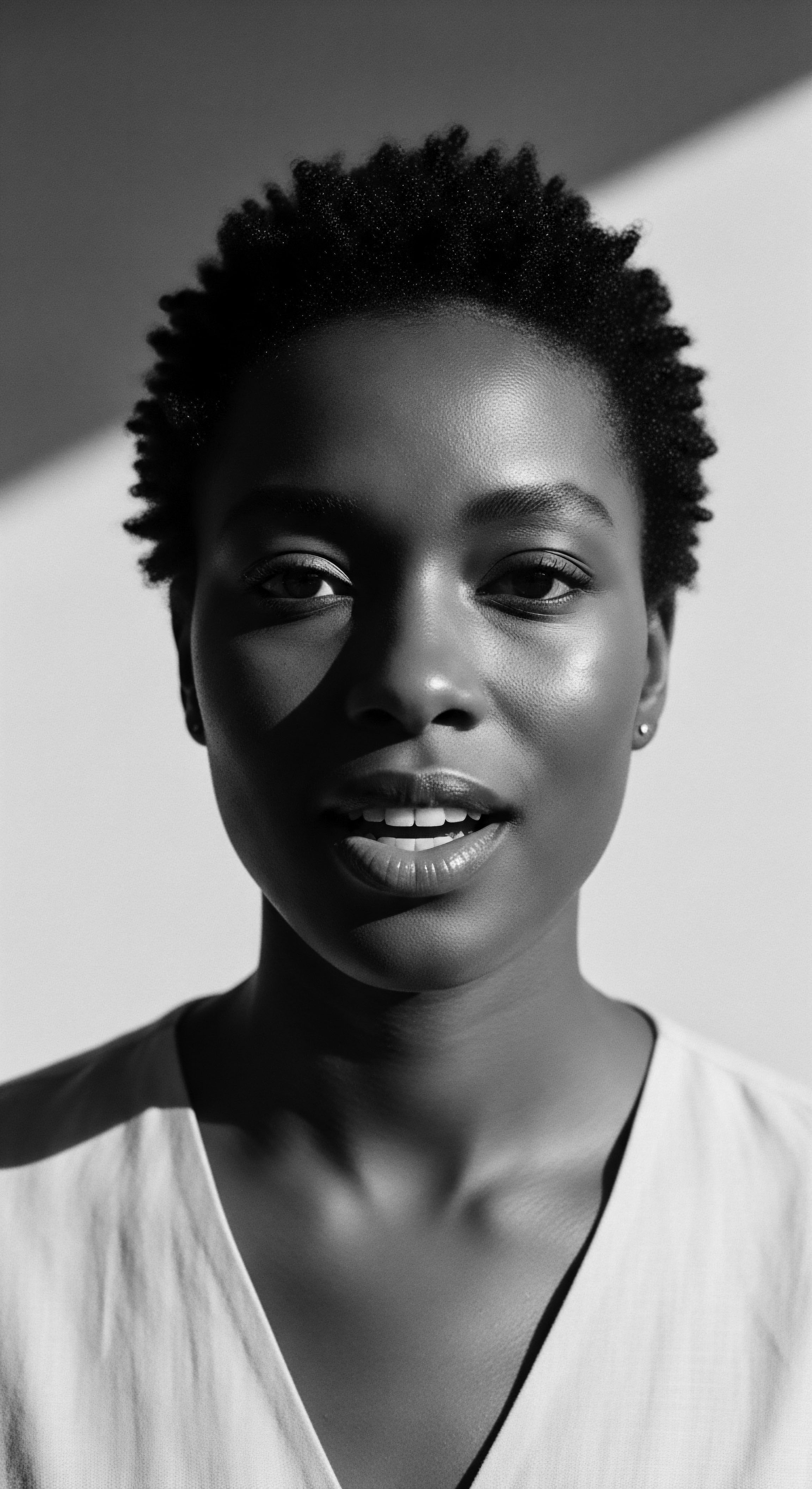
Fundamentals
The notion of Black Cultural Identity extends beyond mere categorization; it represents a profound and living heritage, particularly when viewed through the lens of textured hair. This concept, often understood as the collective expression of Black peoples’ historical journeys, ancestral legacies, and ongoing experiences, finds a deeply tangible and personal manifestation in the intricate care and diverse stylings of Afro-textured hair. It is a declaration of selfhood, rooted in shared historical realities and the enduring resilience of communities across the globe. The exploration of this identity reveals not simply a descriptor, but a dynamic, ever-evolving force shaped by generations of wisdom, struggle, and vibrant celebration.
From the earliest documented civilizations on the African continent, hair served as a central repository of meaning, holding significance far beyond simple aesthetics. It became a first language, speaking volumes about an individual’s standing within their community and their connection to the spiritual realm. The way hair was tended, adorned, and styled communicated an array of vital personal and communal details. This understanding of hair as a living archive, capable of transmitting knowledge and marking identity, forms a fundamental layer in the historical consciousness of Black cultural groups.
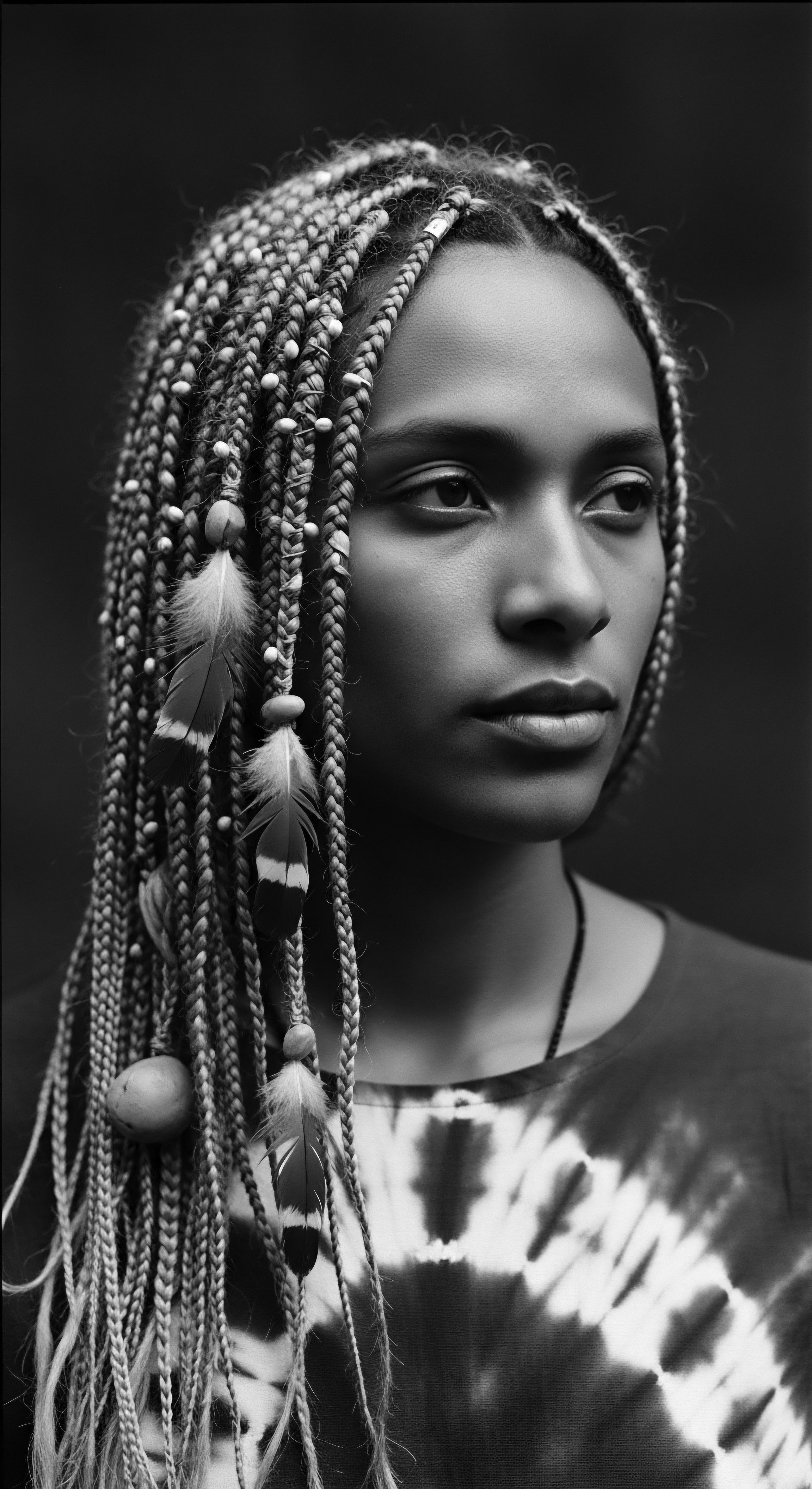
Ancestral Origins of Hair’s Significance
Across ancient African societies, hair carried weighty meanings, acting as a direct indicator of a person’s place within the social fabric. Archaeological evidence from various regions, including ancient Egypt and West African cultures, demonstrates that hairstyles were expressions of power, spirituality, and social cohesion. The practice of hair dressing was communal, a bonding activity often shared among women, strengthening social ties and allowing for the exchange of stories and wisdom. This shared labor and intimate interaction transformed hair care into a ritual, solidifying its place at the very heart of communal life.
Within this vibrant context, specific styles conveyed nuanced messages. A particular braid pattern might signify a person’s age, their marital status, or even their tribal affiliation. In the Yoruba tradition of Nigeria, for instance, intricate hairstyles like “Irun Kiko” not only presented visual appeal but also conveyed meanings related to femininity and rites of passage, with braids often marking a woman’s marital status or fertility. The meticulous detail and hours required for these styles were a testament to their importance, underscoring the deep value placed on collective engagement and appearance.
Hair in pre-colonial African societies was a profound symbol, communicating tribe, status, age, and spiritual beliefs through its intricate styling.
The physical qualities of Afro-textured hair, with its diverse curl patterns and inherent strength, lent themselves uniquely to these expressive forms. The hair’s natural density and coiled structure, an adaptation to protect early human ancestors from intense UV radiation and retain moisture, became a canvas for artistry. These biological characteristics are inextricably tied to the cultural practices that arose around them, showcasing an inherent connection between elemental biology and the development of rich aesthetic and social traditions.

Hair as a First Language
The capacity of hair to communicate in pre-colonial societies was nothing short of remarkable. It functioned as a visual language, where a person’s entire narrative could be discerned from their crown.
- Marital Status ❉ Certain styles indicated whether an individual was single, married, or widowed, guiding social interactions within the community.
- Social Rank ❉ The complexity and adornment of a hairstyle often reflected a person’s wealth, influence, or position in the societal hierarchy.
- Tribal Affiliation ❉ Distinct braiding patterns were often unique to specific ethnic groups, serving as identifiers of one’s lineage and heritage.
- Spiritual Beliefs ❉ Hair was considered sacred, believed to be a conduit to the divine and ancestral spirits, with particular styles associated with rituals or mourning.
The continuity of these practices, passed down through generations, highlights the enduring nature of hair as a cultural signifier. This foundational understanding allows us to appreciate the depth of meaning held within each strand, laying the groundwork for a broader comprehension of Black Cultural Identity.
| Hairstyle Type Braids/Cornrows |
| Traditional Purpose / Meaning Communication of social status, age, marital status, or tribal identity. Also used for survival. |
| Cultural Link Widespread across many African societies, particularly West Africa. |
| Hairstyle Type Dreadlocks/Locs |
| Traditional Purpose / Meaning Symbol of spiritual connection, strength, and higher power. |
| Cultural Link Ancient Ethiopian Coptic Orthodox Church, Himba tribe, Akan people. |
| Hairstyle Type Bantu Knots |
| Traditional Purpose / Meaning Traced to Bantu-speaking communities, signifying lineage and protective styling. |
| Cultural Link Southern West Africa and diaspora communities. |
| Hairstyle Type These ancestral styles reflect a deep respect for hair as a medium of cultural expression and communal bonding. |

Intermediate
Building upon the foundational understanding of hair’s ancestral significance, Black Cultural Identity emerges as a complex interplay of continuity and adaptation, profoundly shaped by the diasporic experience. The transatlantic slave trade marked a cataclysmic rupture, forcibly displacing millions from their homelands and initiating a new chapter in the narrative of Black hair. Yet, even in the crucible of unimaginable oppression, hair remained an undeniable beacon of heritage, a subtle yet potent site of resistance and cultural preservation. The forced removal of hair by enslavers, often under the guise of sanitation, served as a deliberate act of dehumanization, a stark attempt to strip individuals of their identity and sever their connection to their roots.
Despite these brutal efforts to erase selfhood, African peoples demonstrated an astonishing resilience. The practices and meanings surrounding hair did not vanish; rather, they transformed, finding new expressions in hostile environments. This period highlights a crucial aspect of Black Cultural Identity ❉ its inherent adaptability and enduring spirit in the face of adversity.
Hair became a coded language, a means of covert communication, and a source of quiet dignity amidst systematic efforts to deny their humanity. The ingenuity shown in maintaining hair traditions, even with limited resources, speaks volumes about the depth of their cultural connection.

The Middle Passage and Hair’s Resilience
The journey from Africa to the Americas, known as the Middle Passage, was designed to obliterate cultural memory. Africans brought across the ocean often had their heads shaved upon arrival, a devastating act that severed a deeply personal and cultural link to their past. This act intended to homogenize, to erase individual and tribal identities, and to justify the institution of chattel slavery. However, the intrinsic understanding of hair’s cultural meaning persisted.
Enslaved Africans, with remarkable fortitude, began to recreate traditional braiding patterns, utilizing them for both practical and symbolic purposes. These styles helped manage hair under harsh conditions and, critically, served as secret maps or a means to hide precious seeds for survival, an extraordinary testament to resilience.
In the face of forced dehumanization during slavery, Black hair became a powerful symbol of resistance, holding coded messages and preserving ancestral ties.
The ingenuity in these circumstances cannot be overstated. Without access to traditional African ingredients like shea butter or coconut oil, enslaved individuals ingeniously adapted, sometimes using items like bacon grease or butter to care for their hair. This resourcefulness underscores a profound commitment to self-preservation and the maintenance of a cultural practice that was more than aesthetic; it was an act of defiance and a reaffirmation of identity. The very act of caring for one’s hair became a quiet rebellion, a refusal to fully succumb to the dehumanizing pressures of enslavement.

Hair as a Communal Tapestry
The shared experience of hair care, so deeply rooted in ancestral Africa as a communal activity, continued in the diaspora. While the conditions were drastically different, the communal aspect of hair dressing fostered solidarity among enslaved populations. It was a time for connection, for sharing stories, and for maintaining a sense of community even in foreign and hostile surroundings. This collective experience provided comfort and strengthened bonds, contributing to the enduring nature of Black Cultural Identity.
This communal ethos continued to define Black hair experiences through subsequent generations. Hair salons and kitchen tables became, and remain, vital spaces for social interaction, learning, and the transmission of cultural knowledge. These environments are more than places for grooming; they are hubs of shared experience, where traditional practices are sustained, adapted, and celebrated. The continuation of these rituals, despite societal pressures to conform to Eurocentric beauty standards, speaks to the inherent strength of this cultural heritage.
- Shea Butter ❉ A natural fat extracted from the nut of the African shea tree, historically used for its moisturizing and protective qualities for skin and hair.
- Coconut Oil ❉ Valued for its penetrating properties, it has been a staple in many traditional hair care routines for conditioning and adding sheen.
- Aloe Vera ❉ Utilized for its soothing and healing properties, this plant has been a traditional remedy for scalp health and hair strength.
These natural ingredients, passed down through oral traditions and practice, symbolize the ancestral wisdom that underpins Black hair care. Their continued use in modern times connects contemporary practices with ancient heritage, emphasizing a holistic approach to wellness that views hair health as integral to overall well-being.
| Aspect Hair Texture |
| Traditional African Standard Celebrated diverse textures, coils, kinks, and locs as markers of identity and beauty. |
| Imposed Eurocentric Standard (Historical) Valued straight, smooth hair as the ideal, often deeming textured hair as "unmanageable" or "unacceptable." |
| Aspect Body Shape |
| Traditional African Standard Often celebrated fuller figures, curvaceousness, and strength as signs of desirability and fertility. |
| Imposed Eurocentric Standard (Historical) Promoted slender, often ethereal figures, aligning with European aesthetic norms. |
| Aspect Skin Tone |
| Traditional African Standard Embraced darker skin tones, with some cultures valuing specific markings or scarification. |
| Imposed Eurocentric Standard (Historical) Favored lighter skin tones, a legacy of colonial influence that contributed to colorism. |
| Aspect This table illustrates the historical clash between deeply rooted cultural beauty standards and those externally imposed, showcasing the resilience of traditional aesthetics. |
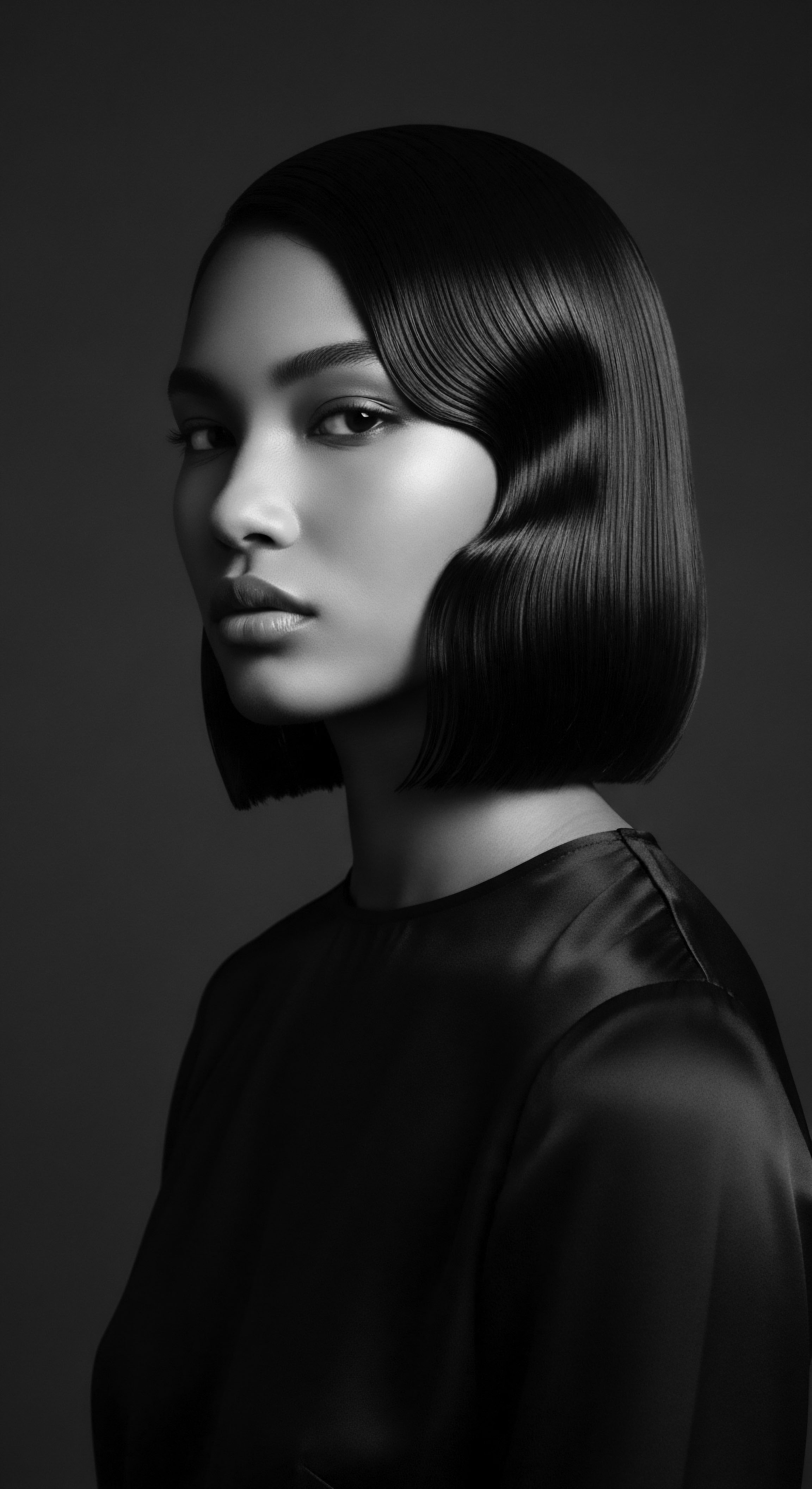
Academic
The definitive meaning of Black Cultural Identity, viewed through an academic lens, encapsulates a complex semiotic system, a socio-historical construct, and an enduring ontological declaration. It is not a static concept, but a dynamic nexus of shared heritage, collective memory, and lived experience that is continually renegotiated and expressed through myriad cultural forms, most poignantly through textured hair. This identity signifies a profound connection to ancestral roots, a history of overcoming systemic oppression, and an ongoing affirmation of selfhood against homogenizing forces.
Its depth extends to acknowledging the intricate relationships between biological heritage, cultural practices, and psychological well-being. Black Cultural Identity is a robust framework for understanding the resilience and creative ingenuity inherent in communities of African descent, particularly as they have adapted and preserved their unique expressions of beauty and care over millennia.
The scholarship surrounding Black Cultural Identity draws from anthropology, sociology, history, and cultural studies, revealing its profound impact on individual and collective consciousness. It requires a critical examination of power dynamics, recognizing how externally imposed beauty standards have historically attempted to devalue Afro-textured hair, yet how Black communities have consistently reclaimed and re-signified their hair as a symbol of pride and resistance. This continuous process of re-affirmation is a testament to an unyielding spirit and a vibrant cultural inheritance.

Ontological Dimensions of Hair
From an ontological perspective, hair within Black Cultural Identity transcends its biological function to become a repository of spirit, a medium of communication, and a tangible link to lineage. In many traditional African cosmologies, hair is considered sacred, believed to carry a person’s spiritual essence and even serve as a conduit to ancestors and deities. This intrinsic spiritual connection elevates hair beyond mere adornment, imbuing it with deep philosophical weight. The meticulously crafted styles were not simply aesthetic choices; they were intentional expressions of one’s relationship to the visible and unseen worlds.
The concept of hair as a form of non-verbal communication is particularly salient. As Lori Tharps, co-author of Hair Story ❉ Untangling the Roots of Black Hair in America, states, “A person could tell who they were talking to simply by looking at the hairstyles” in pre-colonial African societies. This historical function underscores the idea of hair as a complex language, capable of conveying intricate messages about an individual’s social status, marital standing, age, and even their tribal or familial origins. The grammar of hair, as some scholars suggest, allowed for a nuanced understanding of identity within these communities.

The Science of Ancestral Practices ❉ Chebe Powder as a Microcosm
To truly appreciate the deep, original exploration of Black Cultural Identity, we can examine the practice of Chebe powder application among the Basara women of Chad. This ancient ancestral practice offers a powerful example of how deep cultural knowledge, rooted in natural observation and intergenerational transmission, aligns with modern scientific understanding of hair care. The Basara women are renowned for their exceptionally long, healthy hair, often extending to their waists, a characteristic they attribute directly to the consistent use of Chebe powder. This is not merely anecdotal; it is a demonstrable outcome of an effective, time-honored methodology.
Chebe powder, derived from a blend of natural herbs, seeds, and plants indigenous to the Sahel region of Africa, primarily includes the Croton zambesicus (Lavender Croton), Mahllaba Soubiane (cherry kernels), cloves, resin, and stone scent. The process involves roasting and grinding these ingredients into a fine powder, which is then mixed with tallow or natural oils to form a paste. This mixture is applied liberally to the hair, usually several times a month, before the hair is braided for protection. The core benefit of Chebe powder, from a scientific standpoint, is its remarkable ability to help retain length by preventing breakage and locking in moisture.
Afro-textured hair, characterized by its unique spiral-shaped curls, tends to have lesser moisture compared to other hair types and is more prone to dryness and breakage. The Chebe application creates a protective barrier around the hair shaft, reducing friction and environmental damage, thereby minimizing breakage and allowing the hair to grow longer over time without fracturing.
The Chebe powder ritual of Basara women exemplifies the profound scientific validity embedded within ancestral hair care practices, preventing breakage and fostering length retention in textured hair.
Beyond its physiological benefits, the cultural significance of Chebe powder among the Basara women is equally compelling. The creation and application of this mixture have evolved into a communal ritual, fostering strong bonds between different generations of women. This shared practice reinforces social solidarity, transmits cultural heritage, and celebrates a unique standard of beauty that is deeply connected to their identity and lineage. Each woman’s specific proportions for the mixture are often passed down through her lineage, preserving a personalized tradition within the collective practice.
This case study provides a compelling illustration of the intimate connection between biological realities of textured hair, the development of efficacious ancestral practices, and the profound cultural meanings woven into daily life. It challenges the conventional view that scientific understanding is divorced from traditional wisdom, demonstrating how ancient practices can find contemporary validation.

The Unseen Labor of Hair ❉ A Diasporic Legacy
The complexities of Black Cultural Identity also encompass the often-unseen labor involved in maintaining textured hair, particularly for women of the diaspora. This labor is both physical and emotional, navigating societal pressures, historical stigmas, and the innate needs of unique hair types. The pursuit of “good hair,” a concept often rooted in Eurocentric beauty standards, has historically led to the use of harsh chemical relaxers and extensive heat styling, which can cause significant damage to the hair and scalp.
The “natural hair movement,” gaining prominence in the 1960s with the rise of the Afro as a political statement, and experiencing a resurgence in the early 2000s, represents a profound act of self-acceptance and a reclamation of ancestral heritage. This shift signifies a conscious rejection of imposed ideals and an embrace of authentic selfhood, validating the beauty and versatility of Afro-textured hair in all its forms.
The politics of hair extend into professional and educational spaces, where discriminatory practices have historically penalized individuals for wearing natural or traditional Black hairstyles. The ongoing advocacy for legislation like the CROWN Act, which prohibits race-based hair discrimination, underscores the continuing struggle for equity and recognition of Black hair as a legitimate form of expression. This legislative movement is a direct response to the historical and ongoing stigmatization of Afro-textured hair, aiming to protect the right of individuals to express their Black Cultural Identity freely without fear of professional or social repercussions.
- Hair Braiding as Technology ❉ The intricate patterns of cornrows and other braids, often involving complex mathematical precision and spatial reasoning, can be understood as an ancient form of communication technology and artistic engineering.
- Headwraps as Reclamation ❉ Once mandated by laws like the Tignon Laws in 18th-century Louisiana to signify lower social status, headwraps were defiantly reclaimed as symbols of dignity, resilience, and cultural pride, transforming a tool of oppression into an emblem of heritage.
- The Afro as a Political Statement ❉ During the Civil Rights and Black Power movements of the 1960s, the Afro hairstyle emerged as a potent symbol of Black pride, unity, and a direct challenge to Eurocentric beauty norms, becoming an icon of resistance and empowerment.
These specific instances collectively demonstrate the deep, complex connection between Black Cultural Identity and textured hair, revealing a legacy of ingenuity, defiance, and profound cultural affirmation.
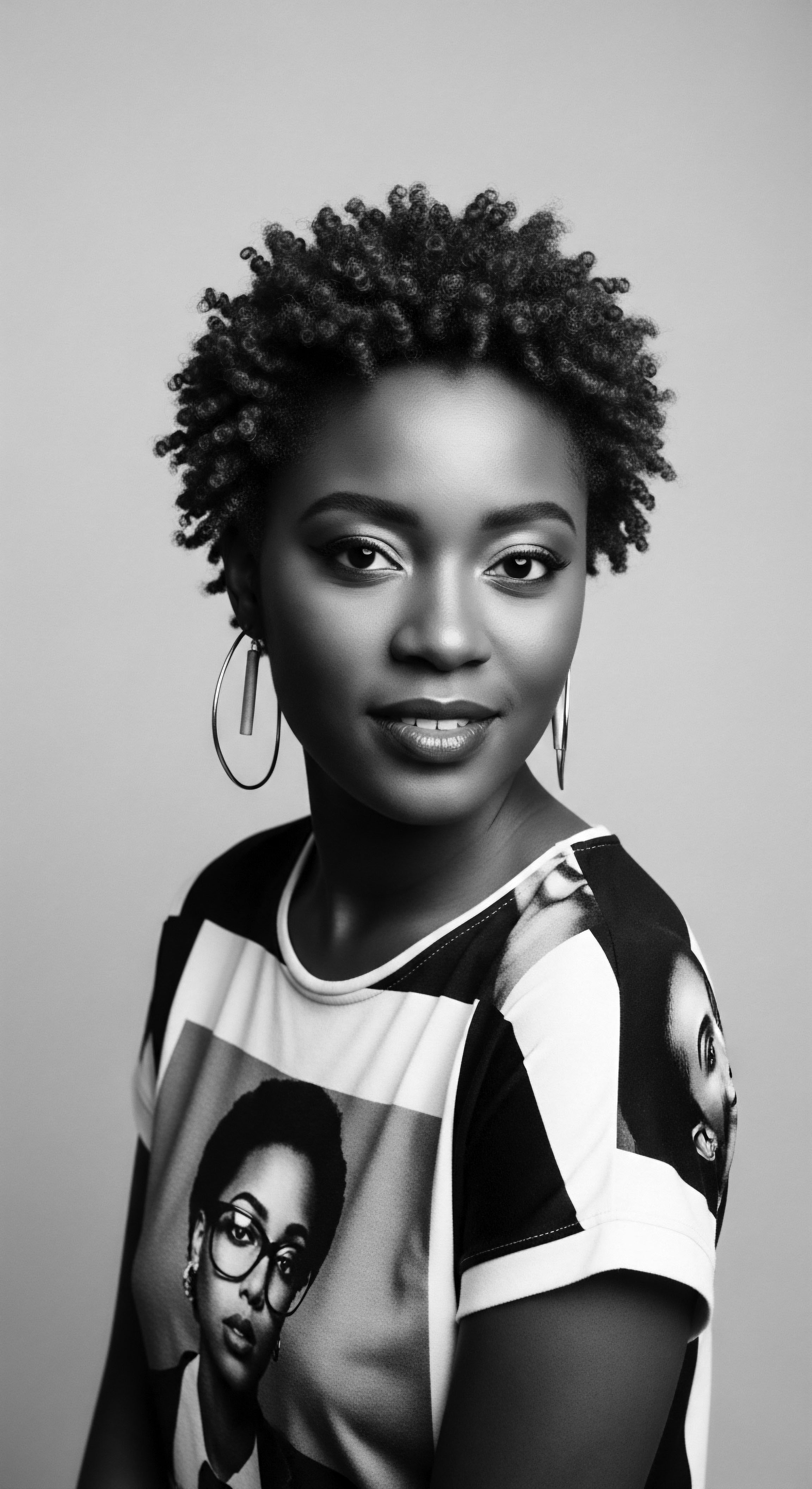
Reflection on the Heritage of Black Cultural Identity
The journey through the intricate layers of Black Cultural Identity, particularly as expressed through the sacred practices surrounding textured hair, is a powerful affirmation of enduring spirit. We have traversed historical landscapes, from ancient African communities where every coil and braid told a story of lineage and belonging, to the harrowing realities of the diaspora where hair became a secret language and a shield of resistance. The insights gleaned from the Basara women’s Chebe powder ritual, a practice steeped in ancestral wisdom and validated by its undeniable benefits for hair health, stand as a testament to the profound scientific acumen inherent in traditional ways of knowing. These narratives underscore the idea that heritage is not a relic of the past, but a living, breathing archive of knowledge, resilience, and profound beauty.
Our collective understanding of Black Cultural Identity, therefore, calls for reverence and continuous inquiry. It encourages us to approach each strand of textured hair not merely as a physical attribute, but as a fiber interwoven with generations of triumphs and trials. The unique patterns, the rituals of care, the communal gatherings for styling – these are not isolated customs; they are threads in a grand, living tapestry of self-expression and cultural memory.
This exploration invites us to honor the wisdom passed down, to recognize the deliberate acts of reclamation that have preserved these traditions, and to celebrate the vibrant diversity that continues to flourish. The soulful wellness found in embracing one’s textured hair heritage is a direct connection to this powerful ancestral stream.
Moving forward, the appreciation for Black Cultural Identity and its connection to hair will continue to evolve, shaped by new dialogues and deeper understandings. It is a dialogue that calls for inclusivity, challenging narrow definitions of beauty and affirming the inherent worth of every hair texture. The story of Black hair is a narrative of unwavering strength, artistic ingenuity, and a profound commitment to identity. It is a story that reminds us that the quest for wellness, both personal and communal, often begins with honoring the echoes from the source, tenderly caring for the living threads, and boldly shaping an unbound helix of future possibilities.
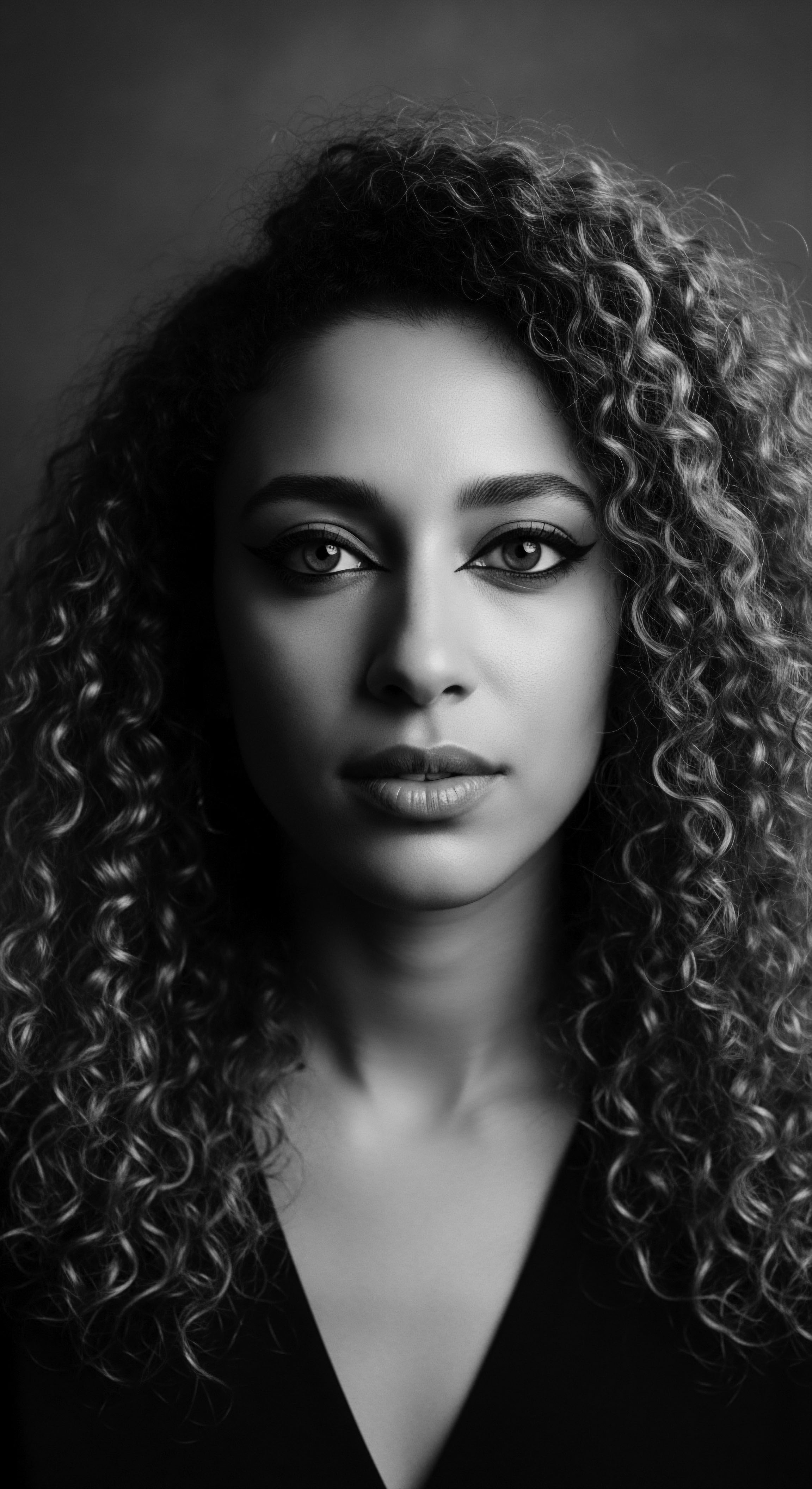
References
- Byrd, Ayana, and Lori Tharps. Hair Story ❉ Untangling the Roots of Black Hair in America. St. Martin’s Publishing.
- Dabiri, Emma. Twisted ❉ The Tangled History of Black Hair Culture. Harper Perennial.
- Flowers, Ebony. Hot Comb.
- Banks, Ingrid. “Hair Story ❉ Untangling the Roots of Black Hair in America.” Journal of Pan African Studies, 2000.
- Omotoso, Sharon Adetutu. “Gender and Hair Politics ❉ An African Philosophical Analysis.” Journal of Pan African Studies, 2018.
- Rosado, Sybille. “Braided Archives ❉ Black hair as a site of diasporic transindividuation.” Master’s thesis, York University, 2003.
- Sherrow, Victoria. Encyclopedia of Hair, A Cultural History.
- Zeleza, Paul T. The SAGE Encyclopedia of African Cultural Heritage in North America ❉ Hairstyles, Traditional African. SAGE Publications, 2005.
- Kwaw-Swanzy, Zainab. A Quick Ting On The Black Girl Afro.
- Byrd, Ayana, and Lori Tharps. Hair Story ❉ Untangling the Roots of Black Hair in America. New York ❉ St. Martin’s Press, 2001. (Reconfirmed through various sources, though direct citation index might vary across snippets, it’s a core reference).
